Merlin
OK, I’ll admit winter wasn’t bad until February hit and made the whole thing an ordeal. By February we are ready to be done with winter, and that’s a bad time to have weeks-long record cold and snowstorm after snowstorm.
I was out at a local reservoir & dam to look for a rare species of gull. I didn’t find it, but I found some bids that looked like they were ready for spring as well.
Here’s my yearly February Robin that likes having raisins tossed to him as he sets up very early territory waiting for the ladies to return.
Meanwhile, out at Griggs Dam-
These were the coldest Great Blue Herons I’ve seen…
Ducks and geese are trying to sleep this month off.
Most interesting bird of the afternoon- an immature Bald Eagle flew over.
Another day last month had me looking through Union Cemetery in Columbus for a bird wintering over.
After looking around for 45 minutes, I spotted a bird up in a tree…
The bird was trimming its feathers.
Surely enough, this was the bird I was looking for- a Merlin. It let me get fairly close, but I didn’t push my luck any farther.
Merlins are small falcons that fly with rapid wingbeats and often spend time surveying for prey from trees. Their primary food is small birds. They look somewhat like American Kestrels, particularly in their small size, but Merlins have streaked breasts. Their name comes from the French ‘Pigeon Hawk’; in the Middle Ages these falcons were called Lady Hawks and were used in falconry, hunting from noblewomen’s wrists.
One interesting fact about Merlins is that they use old bird’s nests instead of building their own- typically crow’s nests or other hawk’s nests.
Last year, a Merlin was seen right here in Union Cemetery over the winter, so my guess is that this was the same bird again, or possibly offspring from last year. It’s good to see this species becoming a regular sight in the area.








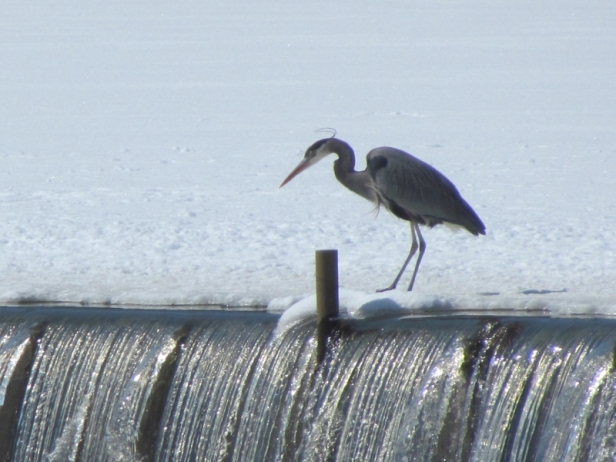

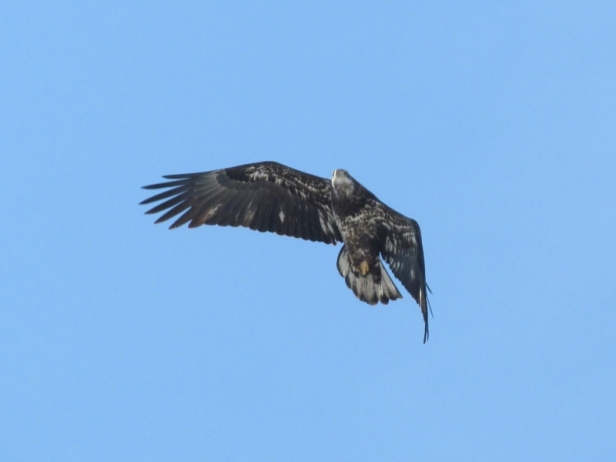





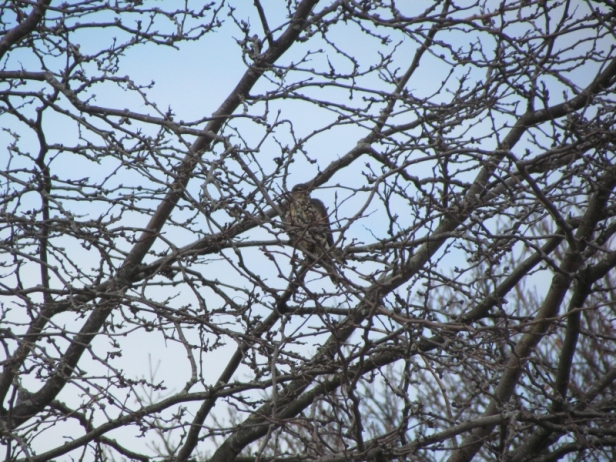
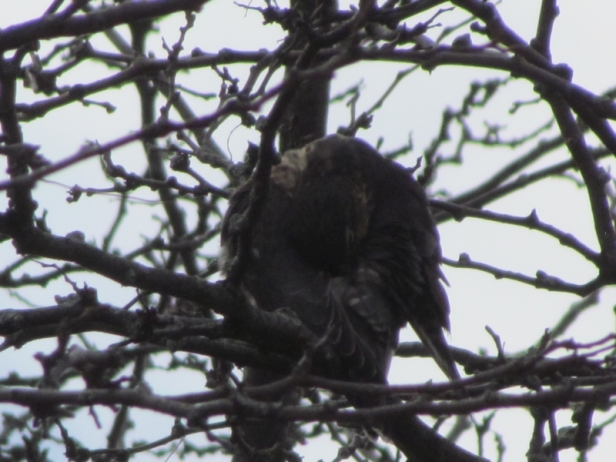

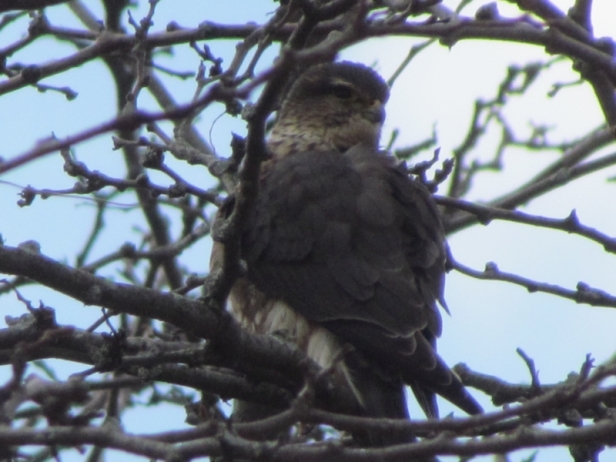
Nice catch on the Bald Eagle! A decent picture in flight has eluded me.
Thanks Robert- it was checking out the ducks below the dam. A magnificent bird!
Hi. We have lots of Bald Eagles, along the St. John River and recently five at the local landfill … Great views for many people who haven’t seen one. Jane
That’s great to hear, Jane! Bald Eagles have been increasingly more common here in central Ohio- a good sign.
Great captures.
Thanks Pat!
Those were some cold birds! It’s great to have a Robin return each year! A few have been through here already heading further north.
February in central Ohio seems to be Robin roulette- if the weather turns bad (extreme cold, deep snow) when the berry supply is running out, many of these early birds die off. If the weather is OK, the early birds get the best territory. It’s a risk, Montucky!
Wow! I’m guessing it’s the same species we have in Britain & Europe? We used to see them quite often over the moors in Wales. Great photos!
Merlins are indeed wide-ranging, Jo! They live in Asia and Europe as well as North & Central America!
Perfect post title! The one heron even looks hunched up against the cold!
Thanks Inger- I felt so sorry for those Herons, they truly looked miserable!
It’s nice to have a regular visitor to a specific location–gives one something to look forward to. I hope Ohio has thoroughly thawed by now. 😉
It makes it so much easier to find those special birds Patti when they come back to the same place year after year! Winter has finally broken, woohoo!